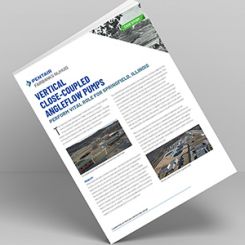
Marketing has historically been the domain of the consumer products industry. However, along with advances in valve technology, social media marketing is beginning to permeate the valve industry.
If you attend any major valve industry trade show today, you will see video monitors in almost every exhibit space displaying information on the company’s products with graphics demonstrating exploded views of their products and applications. Flash drives and other devices have replaced the old familiar heavy binders full of technical literature, and you can also use your smart phone to click on a variety of images and links to be taken to the company’s website, videos of applications, examples of solutions and a wide variety of other online company marketing materials.
Constant Contact and LinkedIn are also being used throughout the industry to frequently broadcast company news, new valve products and major accomplishments, such as current projects, new users, changes in management, etc. These constant reminders about the company and its activities are part of an overall marketing strategy to create and grow brand equity in the minds of customers and to position the company in the industry.
Social Selling
Perhaps the greatest change social media marketing has brought to the valve industry is in the overall area of social selling. Historically, valve salespeople would visit users and prospects with their display cases and present their valve products in person. Each salesperson would have their own approach to selling, and as you can imagine, these individual techniques could vary significantly. Additionally, there was the routine “telephone tag” in trying to set up these in-person meetings and presentations and ongoing travel expenses to get to see users.
Today, most of the selling activities in the valve industry are happening over the internet via Zoom and other video conferencing techniques. While in-person selling is still taking place, it is becoming less common throughout the industry. The ability to demonstrate the functionality and applications for different valve products is significantly enhanced electronically.
Valve salespeople these days can run standardized presentations on their laptops and no longer need to explain the functionality of their valves like they used to do with their sample cases and varying level of knowledge.
Many of the valve product presentations these days can be accessed electronically on company websites and do not require initial human involvement. You can google a valve product and be led to a variety of sophisticated electronic presentations, and in many cases, application examples for specific process control operations.
Likewise, the interface with customers has been improved electronically by email and text messages, improving communications, saving time and eliminating the frustrating telephone tag of earlier times. In many situations these days, the selling process is completely managed electronically without human intervention. This allows for user contacts to be more personal and professional.
Configurators
Another development is online configurators – software that enables the customization of a product’s features and benefits for specific applications.
Process control engineers today using configurators can build and buy valves and valve automation packages. These complete valve assemblies, including accessories like solenoid valves, limit switches and positioners, come with computer-aided design (CAD) files and datasheets on all the components.
In addition to providing all the technical data on valves and valve automation components, many of the companies offering configurators also provide live chat options so engineers can work closely online with valving experts to ensure the proper solution for specific applications.
These companies also provide video valve tutorials on all the valving products they offer. Since the majority of young process control engineers at major end users grew up on the internet, this type of online interface is second nature to them and their preferred way to do business.
Case Histories
Another effective advantage of social media marketing is online cases of applications – video and voice-over explanations of actual solutions to end user problems using companys’ valve and valve automation packages. This technique, in combination with all the above, further reinforces the quality and value of valve manufacturers’ products, as well as reinforcing and growing the company’s brand equity in the mind of end users.
Often, case histories represent exactly the problems other end user process control engineers are looking for solutions for. The more detailed the explanation of the solution and the valves and valve automation packages that were used, the more effective the video of the solution adds to the overall brand equity of the valve manufacturer.
Savvy valve manufacturers and valve suppliers today are emulating what consumer product manufacturers have been doing successfully to build their brand equity for years, utilizing social media marketing techniques.
Today, the social selling process has transitioned almost completely to online strategies in the valve industry. Not only is this a cost-effective process, it also allows for standardization of presentations and a more effective display of the digitized product specifications all the most successful valve manufacturers have developed.
Valve sales professionals today are virtual practitioners of social media marketing, interacting with users over the internet and sharing the quality of their products online with sophisticated videos and case history examples.

